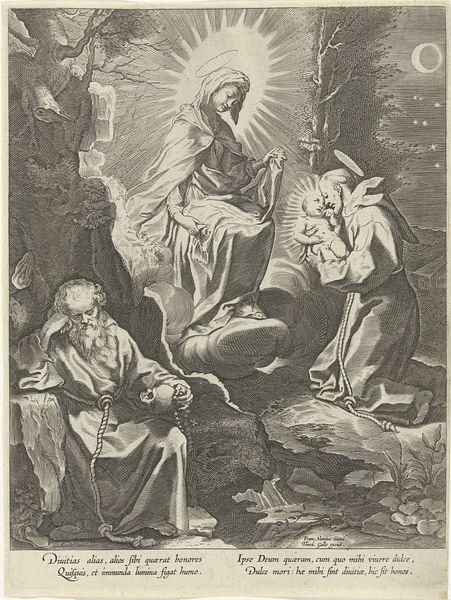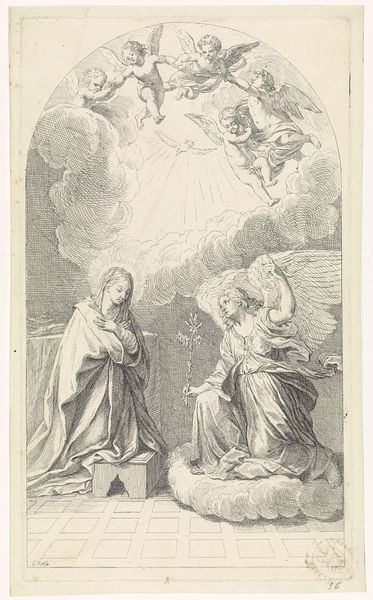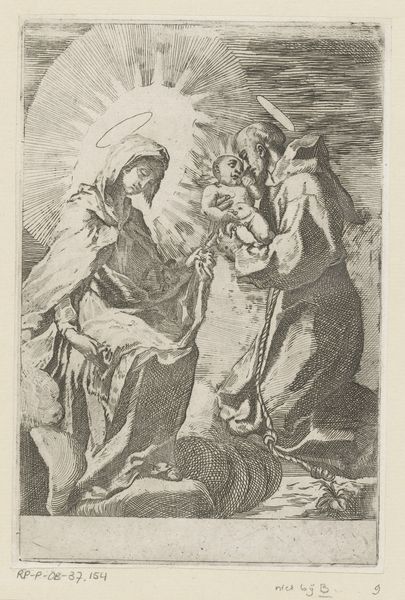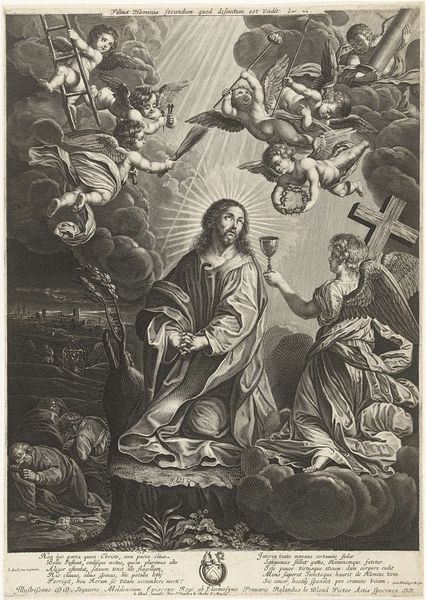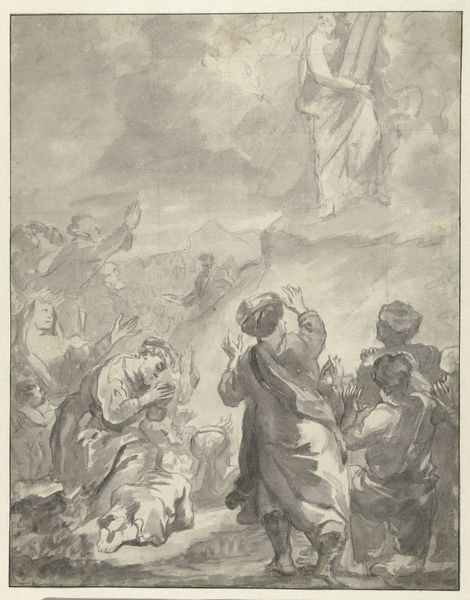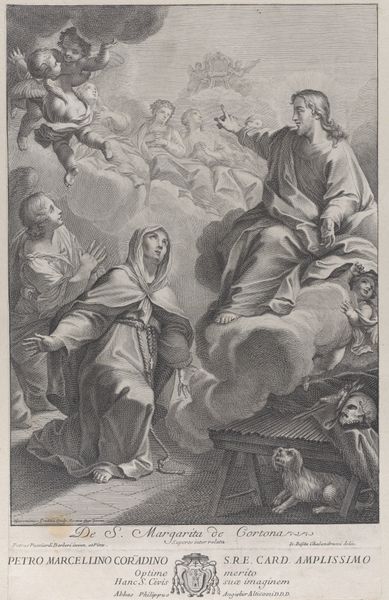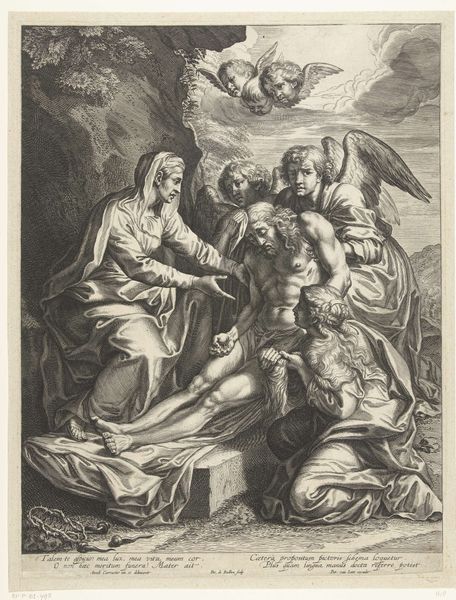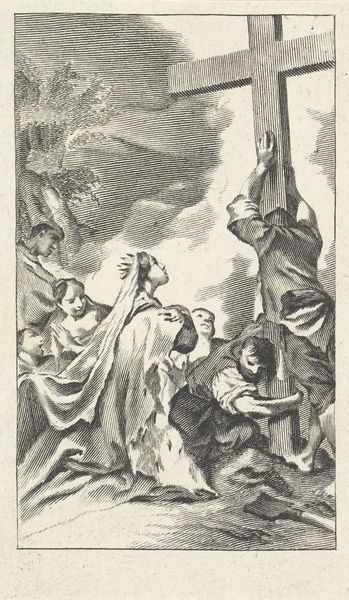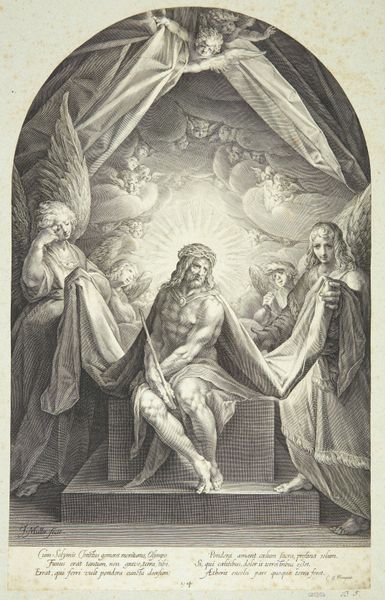
H. Franciscus van Assisi heeft een visioen van Maria en het Kind before 1633
0:00
0:00
cornelisgallei
Rijksmuseum
#
pencil drawn
#
light pencil work
#
pencil sketch
#
old engraving style
#
charcoal drawing
#
pencil drawing
#
pen-ink sketch
#
portrait drawing
#
pencil work
#
pencil art
Dimensions: height 278 mm, width 212 mm
Copyright: Rijks Museum: Open Domain
Cornelis Galle I created this engraving, showing Saint Francis of Assisi having a vision of the Virgin Mary and Child, at the beginning of the seventeenth century in the Netherlands. The image uses recognizable visual codes to establish meaning. For example, the Virgin Mary is surrounded by light and is floating on a cloud, to represent her divine status. Saint Francis is dressed in a simple robe and is kneeling, to represent his humility and devotion. The image would have been commissioned by the Catholic Church, or by a wealthy patron who was a devout Catholic. The engraving reflects the religious and political climate of the time. The Netherlands was a center of the Counter-Reformation, a movement within the Catholic Church to combat the spread of Protestantism. The image can be seen as a way to promote the Catholic faith and to encourage people to remain loyal to the Church. To understand art fully, we have to place it in social and institutional context, using methods from social history. Research into Galle and the institutions for which he worked can shed light on the political meaning of this engraving.
Comments
No comments
Be the first to comment and join the conversation on the ultimate creative platform.
